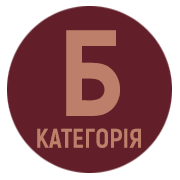LANGUAGE IMAGE HOME IN MODERN UKRAINIAN ART DISCOURSE
DOI:
https://doi.org/10.24919/2522-4565.2023.54.10Keywords:
linguistic image, image component, semantics, meaning, verbalizerAbstract
The article deals with the linguistic expression of the image home in the texts of Iren Rozdobudko, Evhenia Kuznetsova, Maria Tkachivska, Svitlana Taratorina, Victoria Amelina and in Vira Ageeva’s literary work, which only beneficially emphasizes the dominant role of this image in modern Ukrainian discourse. The semantic structure of the image home develops in several vectors: shelter – fortress – family hearth, reliability – constancy – support, property – individuality – uniqueness – realization, unity – independence – potential, person – value, dignity – love – demand, will – road to yourself, trace – memory, land – your region – Motherland – place of birth, life. A separate semantic segment is created by the antonymic components groundlessness, homelessness, a destroyed house – rootedness. The image home is a complex mental formation, it encompasses contrasting concepts: home – dwelling, hut – a house, building – a spiritual value, home – a refugee camp, an adult’s house – a childhood house, one’s own house – a native home, a house-that-is – the house-that-should-be. The semantic complexity of the image home, its multi-component, branching, tendency to define not the material, but the sphere of the ideal, testifies to its deep understanding, importance in the Ukrainian language-mental continuum. The semantic structure of an image is built up by components with figurative meanings, and these secondary meanings become more important than direct ones in modern Ukrainian artistic discourse.
References
«Без ґрунту» Домонтовича : незавершений «собор» українського модернізму. Читомо. 16.11.22. URL: https://chytomo.com/bez-gruntu-domontovycha-nezavershenyj-sobor-ukrainskoho-modernizmu/ (дата звернення : 21.08.2023).
Близнюк К. Асоціативний образ Батьківщини в мовній картині світу української молоді. Мова : класичне – модерне – постмодерне. 2022. Випуск 8. С. 63–82.
Бурачек М. Спогади про Г. І. Нарбута. Бібліологічні вісті. 1927. № 1. С. 94.
Забужко О. Метрополія і провінція. Репортаж із 2000-го року. Київ : Факт, 2001. С. 25.
Іовхімчук Н. Мовний образ хати в українських народних піснях. URL: https://evnuir.vnu.edu.ua/bitstream/123456789/9826/1/iovh_hata.pdf (дата звернення : 23.08.2023).
Миронюк Л. В. Архетип дому в поезії Л. Костенко. Вісник Запорізького національного університету. Філологічні науки. 2015. № 2. С. 77–85.
Москалець М. Міфологема «дім» в українській мовній свідомості. Синопсис : текст, контекст, медіа. 2014. № 1 (5). С. 6–9.
Огар А. Вербалізація концептів земля і небо в українському поетичному дискурсі другої половини 20 ст. : автореф. дис. … наук. ступеня канд. філол. наук. Івано-Франківськ, 2014. 20 с.
Огар А., Гірняк С. Леся Українка крізь призму сучасної книги. Рідне слово в етнокультурному вимірі. Дрогобич : Посвіт, 2022. С. 117–128.
Романенко О. Координати дому : символічні простори роману Вікторії Амеліної «Дім для Дома». Синопсис: текст, контекст, медіа, 2018. № 3(23). С. 1–14.
Савченко Л. Г. Образ дому в поетичній мові Володимира Свідзінського. Вісник Харківського нац. ун-ту ім. В. Н. Каразіна. Серія : Філологія. Харків : Вид-во ХНУ ім. В. Н. Каразіна. 2012. № 1014. Вип. 65. С. 60–64.
Словник української мови : в 11 томах. 1971. Т. 2. С. 306.
Українка, Леся. Апокриф. Вибране. Чотири розмови про Лесю Українку / О. Забужко, С. Шевчук. Київ : Видавничий дім «Комора», 2020. 632 с.
Щепанська Х. А. Мовний образ серця в українській поезії ХІХ століття. автореф. дис. … наук. ступеня канд. філол. наук. Львів, 2014. 20 с.



